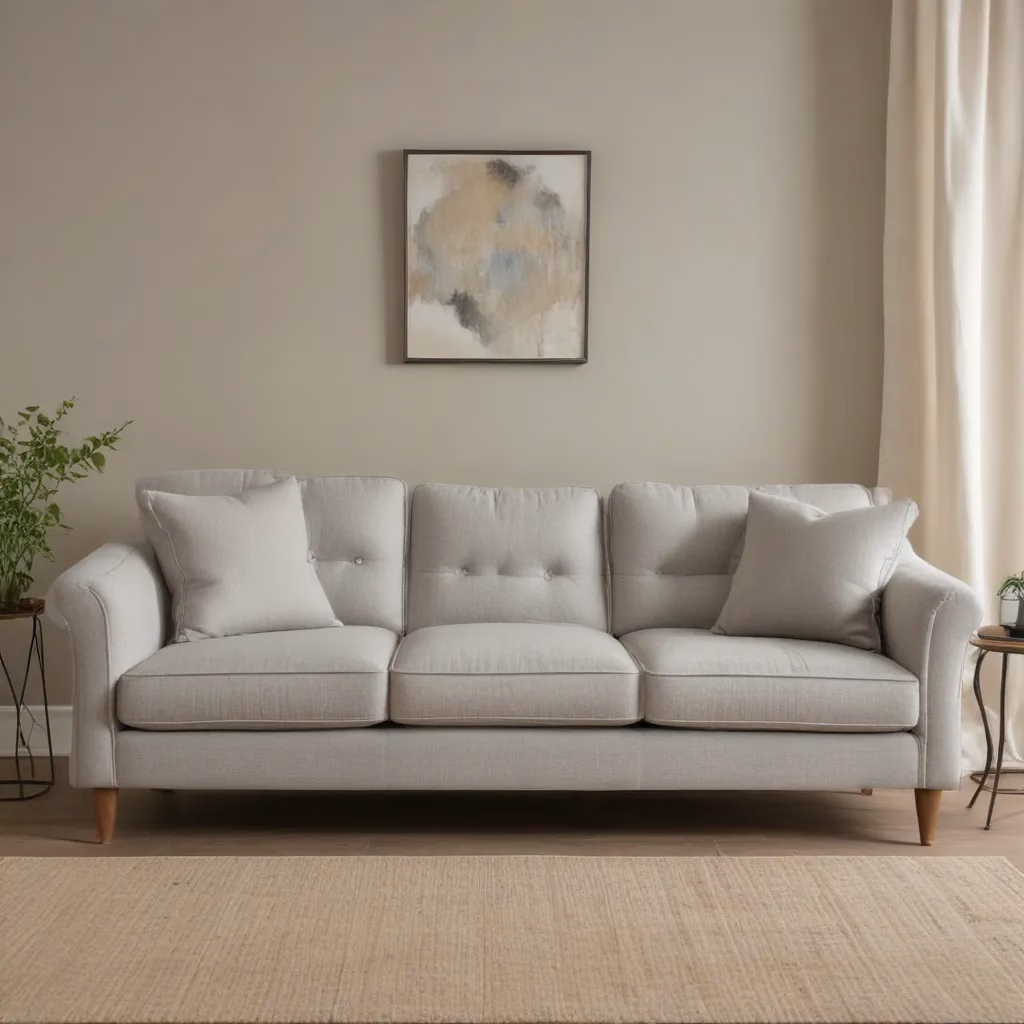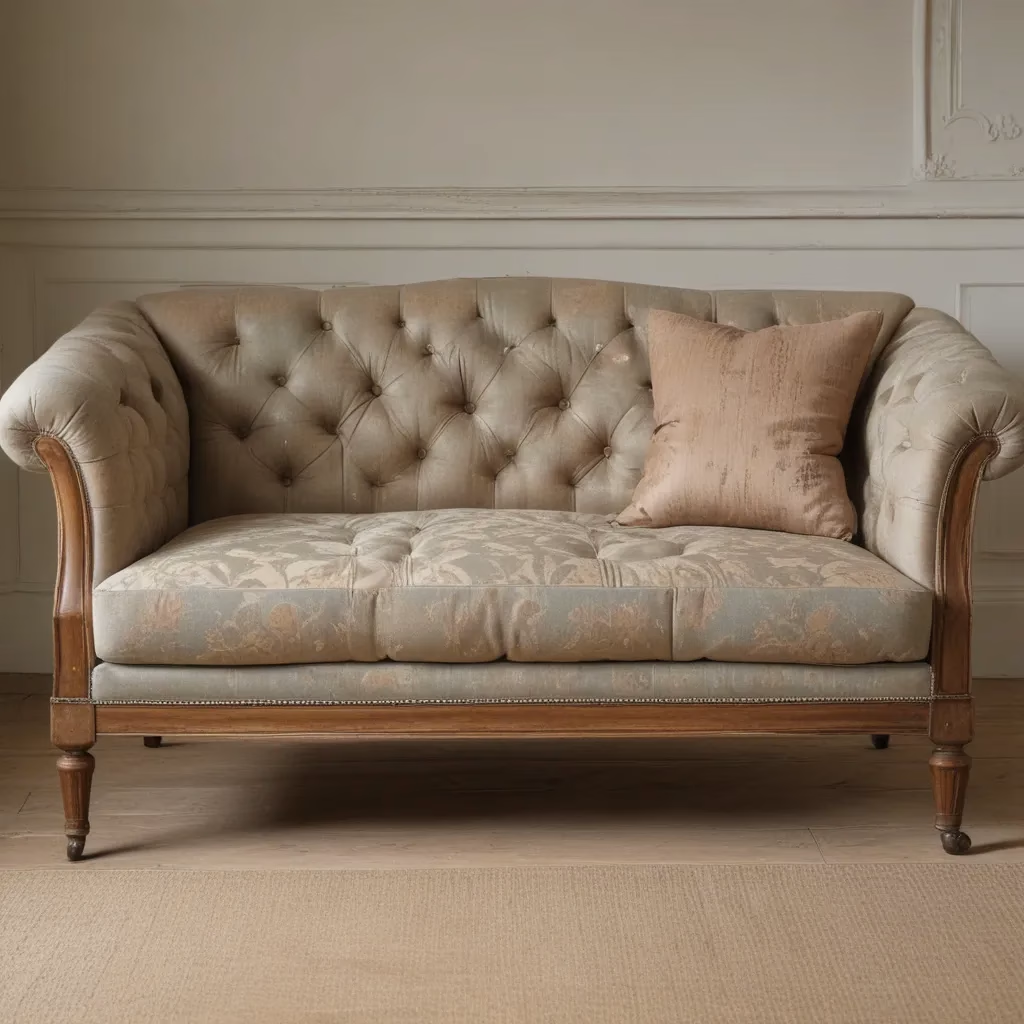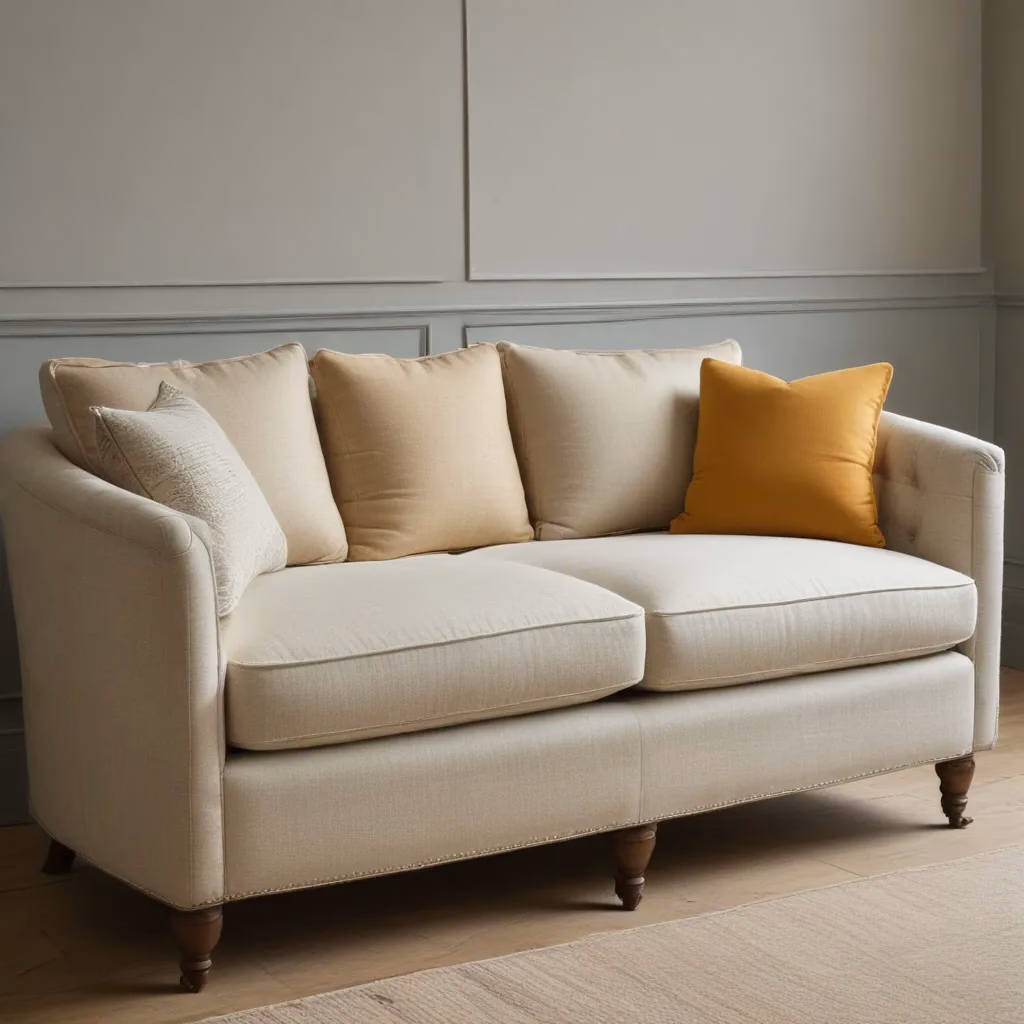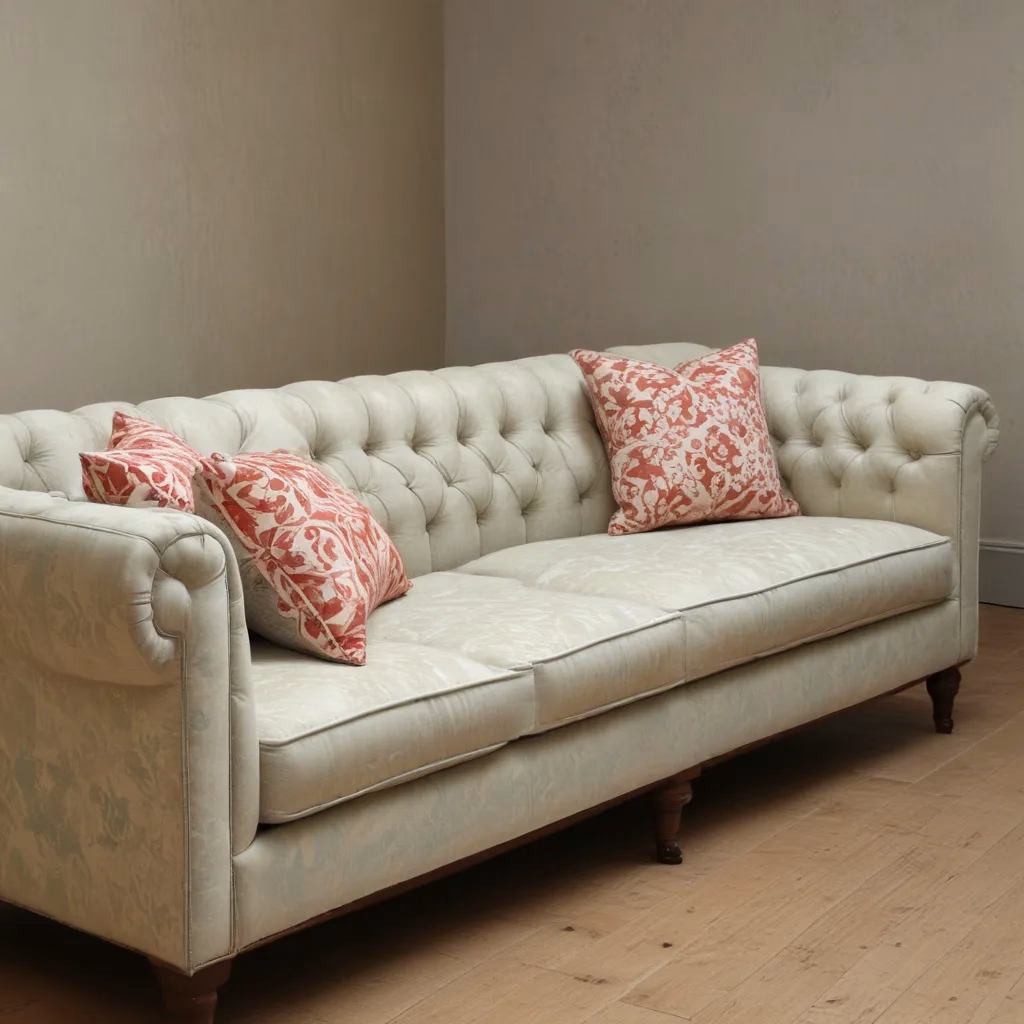
As an experienced furniture consultant and interior design writer, I know that selecting the right sofa fabric is crucial for creating a beautiful and functional living space. When it comes to choosing upholstery, there are a number of important factors to consider – from durability and maintenance, to style and comfort. In this comprehensive guide, I’ll share my expertise to help you find the perfect sofa fabric that meets all your needs.
Now, this might seem counterintuitive…
Fabric Characteristics
The fabric you choose for your sofa will have a significant impact on its overall look, feel, and lifespan. Natural fibers like cotton, linen, and wool offer a soft, inviting texture, but can be more prone to staining, wrinkling, and fading over time. Synthetic fabrics like polyester and acrylic, on the other hand, are generally more durable and stain-resistant, making them a practical choice for high-traffic areas.
When evaluating fabric options, pay close attention to the weave and construction. Tightly woven fabrics like damasks and canvases tend to be more resilient, while delicate, nubby textures like chenille may show wear more quickly. Performance fabrics that are specially treated to be stain, fade, and abrasion-resistant can also be great options, especially for families with pets or young children.
Fabric Durability
One of the most important considerations when choosing a sofa fabric is how well it will hold up to everyday use. The Martindale rub test is a common industry standard that measures a fabric’s resistance to abrasion – the higher the rating, the more durable the material.
For residential sofas, you’ll generally want a Martindale score of at least 15,000 to 25,000 cycles. Fabrics in the 25,000 to 30,000 range are considered heavy-duty and suitable for high-traffic areas or households with active lifestyles. If your sofa will see regular, intensive use, you may want to opt for an even higher-rated performance fabric to double-check that long-lasting quality.
Fabric Maintenance
In addition to durability, you’ll also want to think about how easy (or difficult) a fabric will be to clean and maintain over time. Natural fibers like cotton and linen may require professional cleaning, while synthetic blends are often machine-washable and more stain-resistant.
For homes with children or pets, easy-care fabrics like microfiber, polyester, or performance-treated materials can be a game-changer. These fabrics are designed to repel spills and withstand frequent cleaning, making them a practical choice for high-traffic areas. Lighter colored sofas will also show dirt and stains more easily, so a darker hue or a fabric with a subtle pattern may be the better option if you want to minimize the appearance of wear and tear.
Living Room Layout
The layout of your living room can also influence your sofa fabric selection. In smaller spaces, lighter, solid-colored fabrics can help create an airy, open feel, while bolder patterns and textures may be better suited for larger rooms. Consider the scale of the fabric in relation to the size of the room – a large-scale print may overwhelm a cozy nook, while a delicate pattern may get lost in a grand, open-concept space.
Proper furniture placement is also key. Curvy or intricately shaped sofas may look best in solid fabrics that won’t compete with the lines of the piece, while modular or sectional sofas can benefit from patterns that help tie the different sections together.
Lighting is another important factor – fabrics with reflective qualities like velvet or satin may appear overly shiny in bright, direct light, while matte textiles can help create a more relaxed, inviting ambiance.
Sofa Cleaning & Care
No matter which fabric you choose, proper care and maintenance will be essential for keeping your sofa looking its best for years to come. Regular vacuuming, spot cleaning, and professional deep cleaning when needed can help preserve the integrity and appearance of the upholstery.
For spills and stains, blot and treat the affected area immediately with a mild, upholstery-safe cleaner. Avoid rubbing, which can spread the stain or damage the fabric. If you have delicate natural fibers, consult a professional cleaner to avoid over-wetting or shrinkage.
Preventative measures like using coasters, avoiding direct sunlight, and keeping pets off the furniture can also go a long way in maintaining your sofa’s condition over time. And don’t forget to flip and rotate the cushions regularly to promote even wear.
Sofa Styling & Comfort
Beyond practical concerns, the fabric you choose will also play a big role in the overall style and comfort of your sofa. When it comes to aesthetics, consider how the color, pattern, and texture of the fabric will complement your existing decor and create the mood you want to achieve in the space.
For maximum comfort, look for fabrics with a soft, inviting hand-feel that won’t irritate skin or cause overheating. Supportive cushions and ergonomic design are also key for ensuring your sofa is as cozy as it is stylish.
Don’t be afraid to experiment with accent pillows, throws, and other accessories to add visual interest and personalize your sofa. Swapping out textiles is an easy way to refresh your living room’s look without a major furniture investment.
Furniture Buying Guide
When shopping for a new sofa, make sure to measure your living space carefully to double-check that the piece will fit comfortably. Consider the overall size, scale, and proportions in relation to the room’s dimensions. You’ll also want to establish a realistic budget that accounts for the cost of the sofa itself, as well as any custom upholstery or delivery fees.
As you evaluate different options, prioritize the features that are most important to you – whether that’s maximum durability, a specific style, or superior comfort. Don’t be afraid to order fabric swatches and test them out in your home to double-check that the perfect match.
Upholstery Trends
While classic upholstery styles like tufted velvet and button-tufted leather will always be in demand, the world of sofa fabrics is constantly evolving. Performance textiles with innovative stain-resistant and moisture-wicking properties are becoming increasingly popular, as are sustainable, eco-friendly options like organic cotton and recycled polyester.
Maximalist and bohemian aesthetics have also made a major comeback, with bold patterns, vibrant colors, and unique, textural materials like boucle and fringe adding exuberant flair to living rooms. On the other end of the spectrum, neutral, minimalist fabrics in shades of gray, beige, and white continue to reign supreme for those seeking a more serene, timeless look.
Customization Options
If you can’t find the perfect sofa fabric off the shelf, many furniture retailers and upholstery specialists offer custom ordering and tailoring options. This allows you to select the exact color, pattern, and texture you want, as well as make adjustments to the size, shape, and features of the piece to suit your space.
Other personalization possibilities include monogramming, trim, and decorative accents that can transform a standard sofa into a true one-of-a-kind centerpiece. Just keep in mind that custom work may come with a higher price tag and extended lead times.
Sofa Longevity
Investing in a high-quality sofa that will stand the test of time requires careful consideration of the underlying frame and construction, not just the visible fabric. Sturdy, kiln-dried hardwood frames and durable suspension systems like sinuous springs or eight-way hand-tied coils are marks of superior craftsmanship that will double-check that your sofa maintains its structural integrity.
Equally important are the cushion fillings - look for high-resilience foam, high-density polyurethane, or premium down alternatives that will retain their supportive properties for years to come. And remember, even the most well-made sofa may eventually need professional reupholstering or repair work to look and function its best.
Choosing the ideal sofa fabric is a deeply personal decision, but with the right knowledge and guidance, you can find a solution that checks all the boxes – style, comfort, durability, and easy maintenance. By weighing the tradeoffs and prioritizing your needs, you’ll be able to create a living room sanctuary that you’ll love coming home to for many years to come.
Tip: Rotate cushions regularly to maintain even wear



